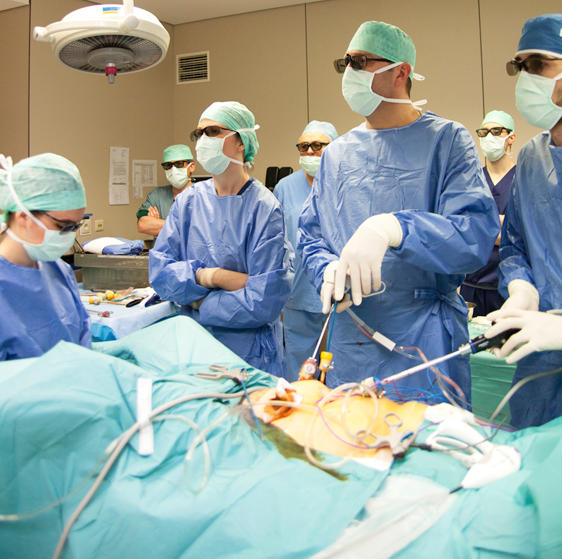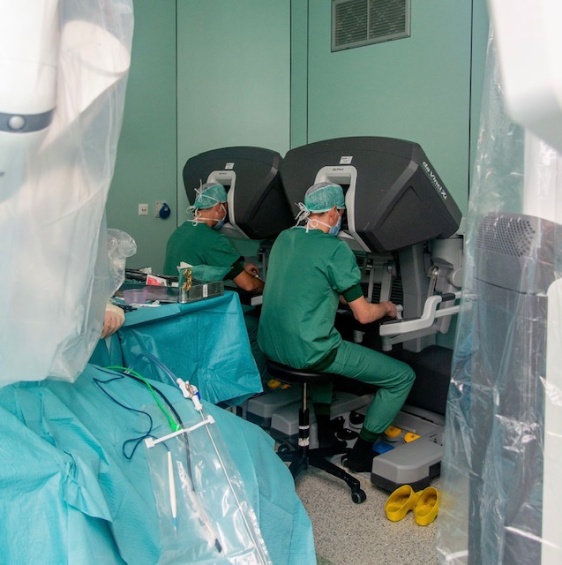
Laparoscopy
The minimal-invasive laparoscopic approach offers a number of indisputable advantages over invasive techniques because the approach requires only minor incisions resulting in better short term outcomes.
However this way of performing surgery demands other skills from the surgeon because there is less tactile feedback and he is forced to think in a 3-dimensional way while working mainly on a 2-dimensional screen (although 3D-screens are available).
Therefore the risk of damaging organs is higher unless the surgeon is well trained and experienced in such techniques. For this reason training centers were established around the world.
Because every move of the surgeon can be watched, recorded and played back laparoscopic surgery is a perfect technique to train on a screen.
